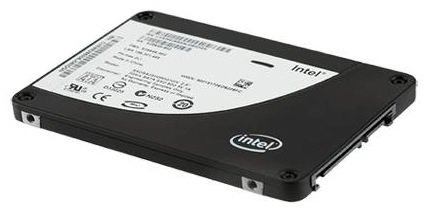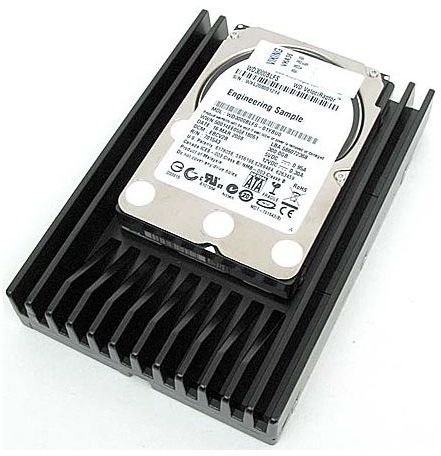Convert to SSD - Why SSD Performance Dominates
The King is Dead - Long Live the King!
Mechanical hard drives have been the predominate form of long-term storage used by PCs for decades. Although other forms of long-term memory, including solid state drives, have existed during most of that time, only mechanical drives could provide reliable, affordable storage with enough space to hold a modern operating system.
That is beginning to change. Solid state drives, which have no moving parts, are starting to gain steam. Prices are about half of what they were a year ago, and prices will continue to go down.
It is now price, however, which is the reason to convert to an SSD. Converting to an SSD as your main hard drive is a question of performance. There are already many reviews which examine synthetic benchmarks, and they show that even the slowest SSDs tend to outperform the fastest mechanical drives. This article, however, will example real-world performance to explain why buying an SSD can result in a much better computing experience.
The data listed in this article was gathered by a direct comparison between a Western Digital Caviar Black 500GB drive and an OCZ Vertex Agility 60GB drive. Both were tested on the same system with clean installs of Windows Vista Home Premium. Only the drivers that would normally be installed (video, motherboard, etc.) and the software being benchmarked were installed on the system.
Booting Out Mechanical Drives
One question that many people have when looking to make the leap to an SSD is an increase in boot times. The instant satisfaction of turning on a computer and then using it to perform tasks has long been missing. This can be very frustrating at times.
The bad news is that buying an SSD will not take a huge bite out of the boot times of a PC. My tests with the Western Digital Caviar Black drive resulted in an average boot time of 58 seconds, while tests with the Vertex Agility SSD resulted in an average boot time of 50 seconds. An improvement of eight seconds is nothing to scoff at, but it isn’t night-and-day.
What is night and day is what happens after the PC boots up. I ran a test in which I loaded Mozilla Firefox immediately after Windows Vista loaded. The average time for opening Firefox on the Western Digital drive was 48 seconds. The average time to load Firefox with the Vertex Agility drive was 5 seconds. That is an incredible boost.
The VLC load test was similar. I tested how long it took to load a movie using VLC after Windows Vista was loaded. On the Western Digital drive this took 44 seconds, but on the Vertex Agility drive the movie began to play after just 3 seconds.
Needless to say, the experience of using the PC is dramatically different with the SSD than with the Western Digital mechanical drive. To decipher these dramatic results somewhat, the performance improvement is likely accomplished thanks to the random read/write performance of an SSD. When a mechanical drive retrieves data, it must move the read/write head to the area of the disk where the data is located. The SSD does not have to do this. I believe the massive boost in responsiveness after loading Windows Vista occurred because the read/write head of the Western Digital drive was busy loading drivers and startup applications, and so it could not move to retrieve the data for loading Firefox and the VLC movie until it had a break.
Game Performance
To perform a basic test performance while loading a game I decided on using The Sims 3. The Sims 3 is a game that can take a surprising amount of time to load, and it is part of an incredibly popular franchise, so it seemed like a logical game to test.
The initial load tests between the Western Digital drive and the Vertex Agility drive were not as impressive as those obtained during the boot tests, but they still show the performance increase that an SSD can provide. Loading The Sims 3 on the Western Digital drive took an average time of 53 seconds. On the Vertex Agility drive the average load time was 36 seconds. This was a large enough difference to be noticeable, although it also wasn’t so large that it made me feel as if game load times would be valid as the sole reason for upgrading to an SSD.
I also tested frame-rates in case there was a performance difference. Theoretically this could be the case if the game was loading large amounts of data during gameplay, as the SSD should be able to retrieve such data more quickly. I did not however find any difference between the two drives, as the FPS hovered between the 50 and 60 FPS range with both drives.
A Note About Windows Vista

One thing that must be noted is that there is a limitation to the performance increase which will be experienced with an SSD. When using programs in a more-or-less random pattern, as users often do, the SSD’s performance increase is dramatic. As already shown in the boot tests, the SSD is capable of retrieving data from multiple locations much more quickly, and it is this trait that is the reason why buying an SSD can make a computer feel more responsive.
However, this advantage is almost entirely mitigated when using Windows Vista. The reason is a feature in Vista known as Superfetch. Superfetch is an aggressive caching feature in Windows Vista that allows the operating system to keep track of commonly used data. That data is then kept in RAM.
This feature seems to negate the performance advantage of an SSD when performing the same task multiple times. To test this, I loaded The Sims 3 three times, spacing each load five minutes apart. The first load was faster on the SSD, but loading the game after the first time resulted in an average load time of 36 seconds for both the SSD and the Western Digital drive. This occurred because Vista had continued to keep a hold of data used with the game, and put it back into use when I started playing again.
Final Thoughts
I believe this review makes it crystal clear why converting to an SSD from a mechanical drive can result in a massive increase in responsiveness. The difference between waiting 5 seconds for Firefox to load and waiting 48 seconds is massive. The SSD game performance test was not as dramatic, but it still showed that The Sims 3 loads much more quickly on an SSD than on a mechanical drive.
